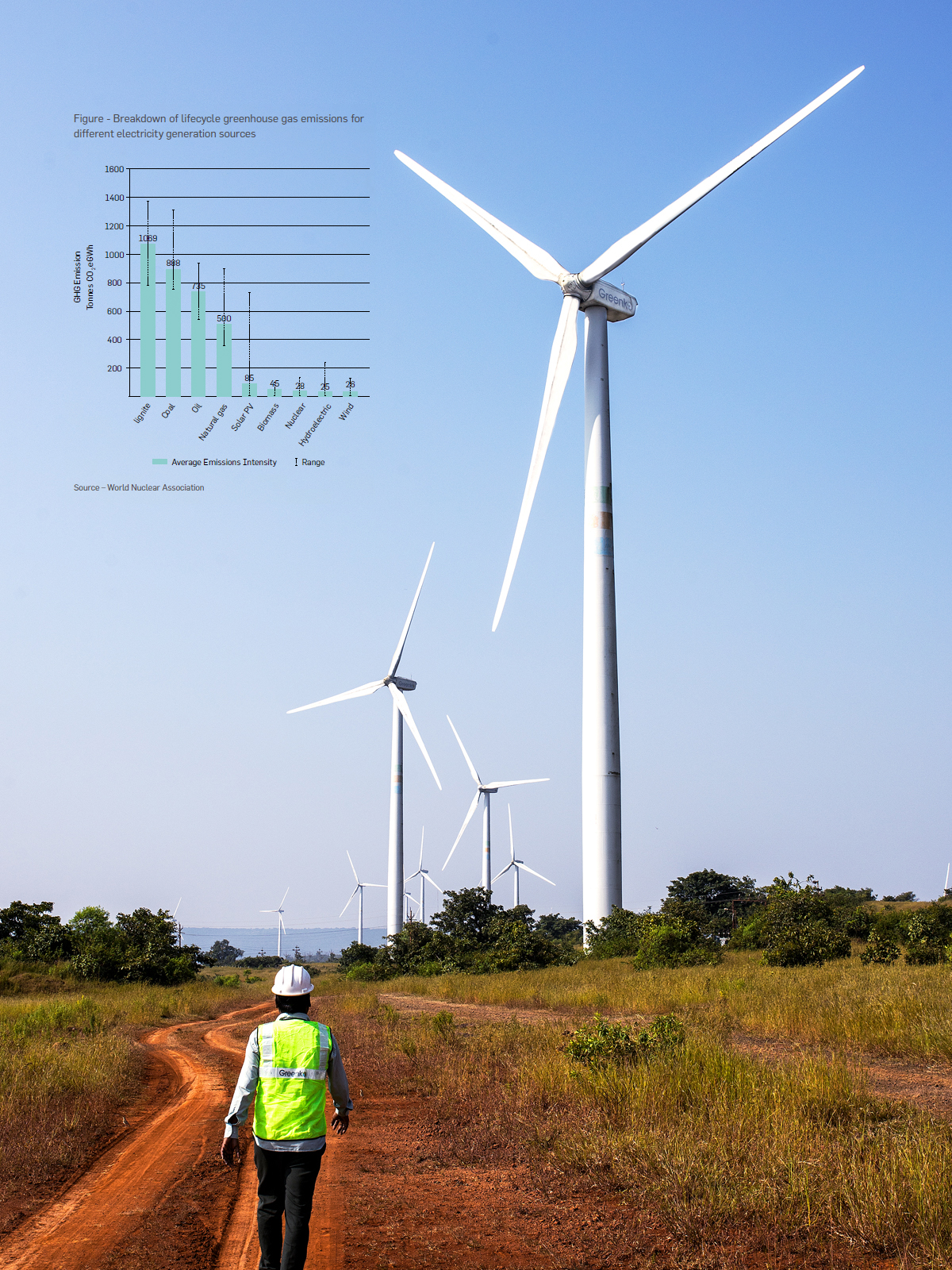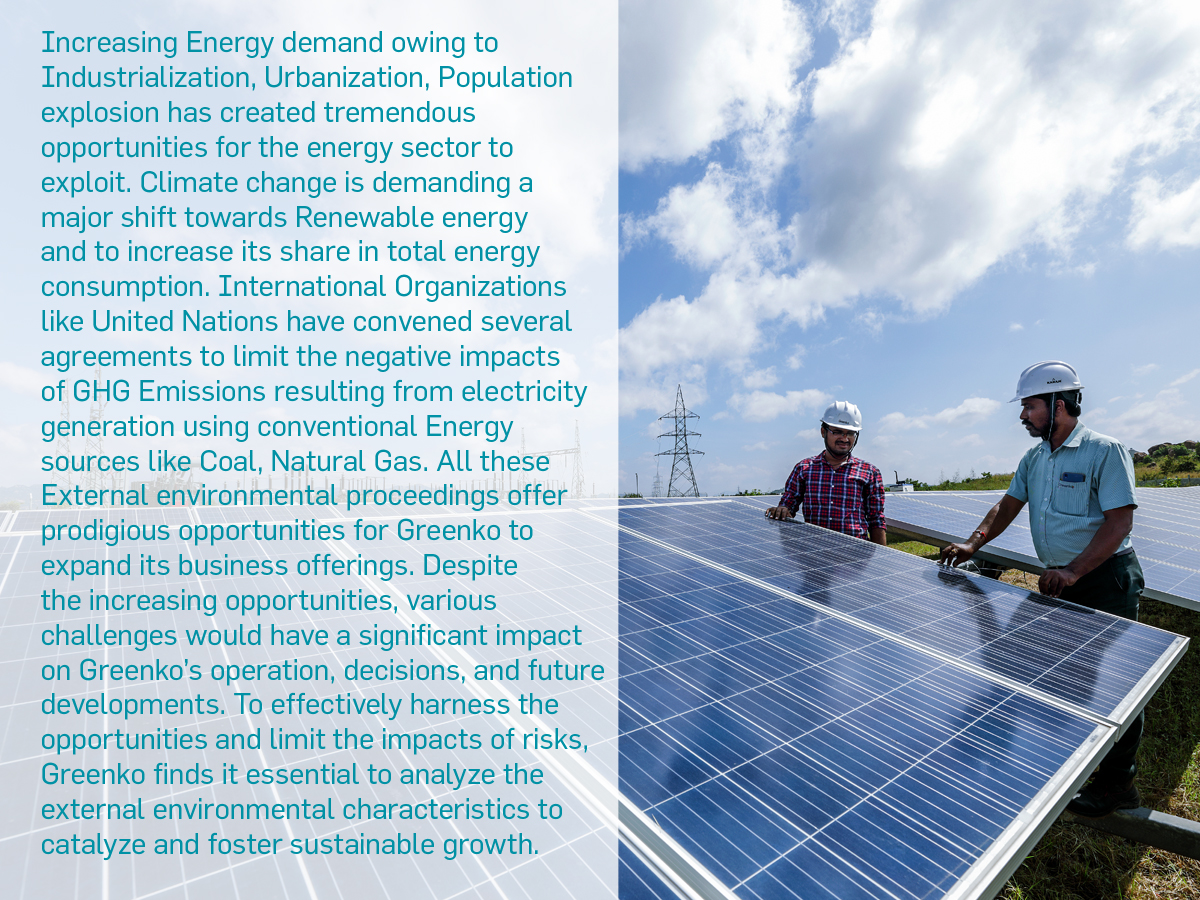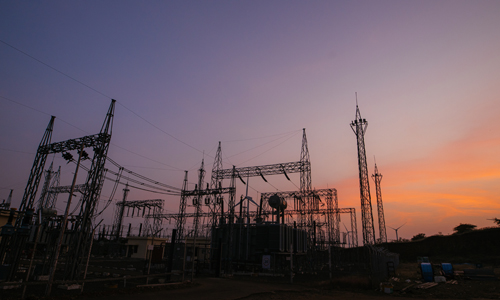Economic development in India has
stimulated the demand for Electricity and the
total consumption is expected to reach 15,280
TWh in 2040, from 4,926 TWh in 2012, as per
India Brand Equity Foundation (IBEF). The
demand is expected to be met from all energy
sources like Coal, Oil, Natural Gas, Solar,
Wind, etc. It becomes necessary to increase
the share of renewable energy mix, thereby
establishing more stable and secure critical
infrastructure to facilitate economic growth.
Further, to limit the rise in temperature to
2°C above pre-industrial levels, it becomes
vital to reduce the emissions from Electricity
generation from Conventional Energy
sources. India has set an ambitious target
to set up 227 GW renewable energy sources
by 2022. According to the Renewable Energy
Country Attractiveness index 2018 by EY, the
Indian renewable energy sector is the third
most attractive renewable energy market in
the world. India Energy Outlook 2021 by IEA
has predicted that the Covid-19 pandemic
will drive down the coal and oil demand and
increase renewable energy generation from
Wind and Solar by 15%.
India at the Cusp
India is the third-largest producer and
second-largest consumer of electricity in the
world and has an installed power capacity of
379.13 GW as of February 2021. For 2020-
21, the electricity generation target from
conventional sources was fixed at 1,330 BU,
comprising 1138.533 BU of thermal energy;
hydro energy (140.357 BU) and nuclear
(43.880 BU); and 7.230 BU was imported
from Bhutan. Further, the electrification of
the country will promote the socio-economic
well-being of the people, and the Government
of India is making efforts to electrify every
nook of the country.
Domestic energy demand is expected to grow
due to increasing industrial growth, nuclear
families, shrinking household sizes, and
urbanization. Policies in India, over the last
decade, have proved effective and accordingly,
96.7 percent of Indian households are now
connected to the grid, with another 0.33
percent relying on off-grid electricity sources.
2.4 percent of Indian households remain
unelectrified (State of Electricity Access in
India, CEEW).
India’s progress on household electricity access (1980-2020)
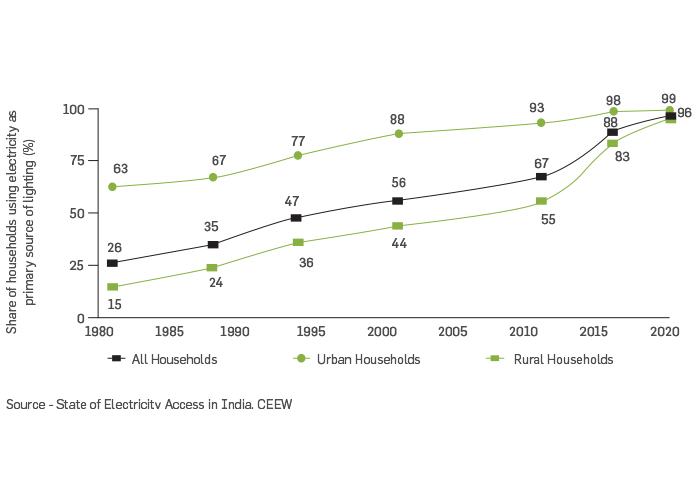
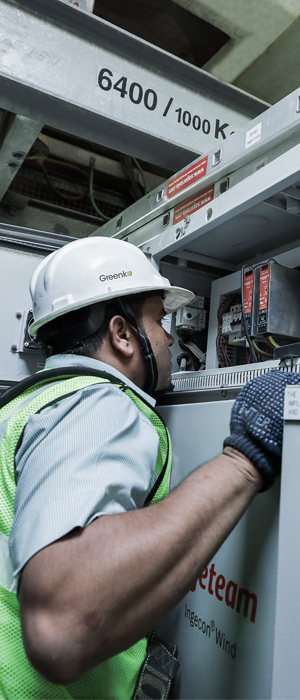
India will be one of the epicenters of Industrial development in near future.
Further, the growth in commercial space will inflate the electricity demand for
indoor environmental requirements like air conditioning and lighting. Transition
to electrified mobility and industrial applications will also add to the increasing
demand. Government plans to electrify rail routes will add to the demand.
Expected increase in electricity demand in India in the coming years provides
enormous opportunities for Greenko to harness renewable energy.
RE Technology Progress
and Price Parity
The ongoing Climate change is inducing entities to undergo an obligatory
transition from fossil fuels to Renewable energy sources like Solar, Wind, etc.
to limit GHG emissions, increasing sea levels, melting glaciers, and increasing
temperature. Further to ensure energy security, it becomes necessary to
diversify energy sources to reduce the reliance on fossil fuels.
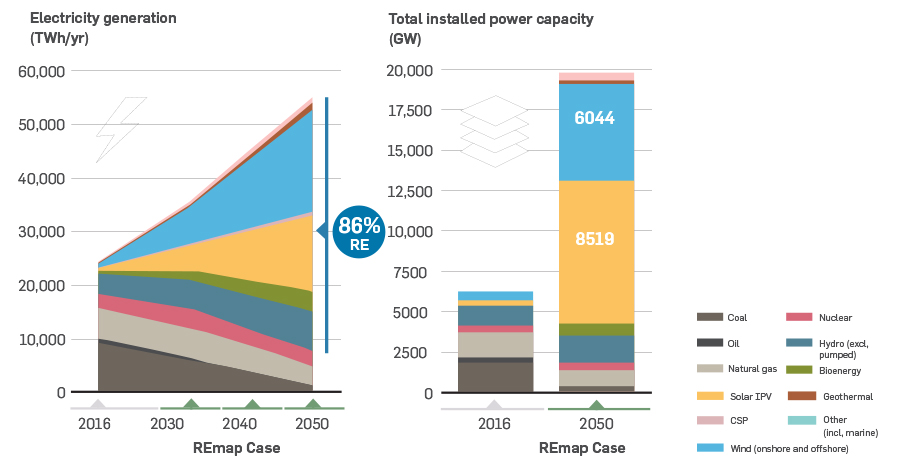
Source- Global energy transformation: A roadmap to 2050, IRENA
The solar power sector in India is expected to undergo explosive growth in
the upcoming years and IEA states that solar will match coal’s share in the
Indian power sector in two decades. Presently, Solar accounts for less than
4% of India’s electricity generation, and coal is close to 70%. By 2040, they
converge in the low 30%, and this electrifying turnover is attributed to policy
initiatives and targets set by the Government. The Indian Electricity sector is
at the cusp of a Solar Revolution and there is huge potential not only for large
PV plants but, also for small distributed renewable energy sources like solar
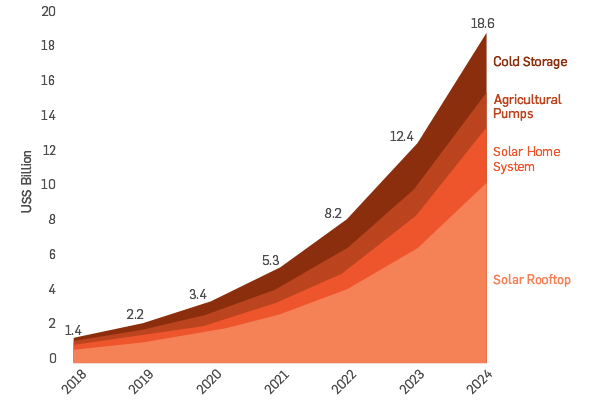
Source - The Future of Distributed Renewable Energy in India, Climate Policy Initiative
rooftops, solar pumps, cold storages etc. Solar energy is now the lowest-cost
source of new energy in India. Spain, India, and the Middle East will continue
to be the markets with the lowest solar Levelized cost of electricity (LCOE).
The photovoltaic (PV) systems CAPEX will continue to decline in 2021 by
5% year on year, largely driven by decreasing component prices. Meanwhile,
average module efficiency records continue to increase, surpassing 22.5%
in PERC monocrystalline cell commercial production, and are forecasted to
reach 24% by 2022. Solar energy has the potential to meet the energy needs of
low incomed residential groups and thereby, can also help in achieving 100%
electrification of households. Further, there are various initiatives taken by
stakeholders to trigger the domestic manufacturing of solar panels and this
could even lead to further lowering of price.
Power System Flexibility –
Need of the Hour
Power system flexibility is defined as the ability of a power system to reliably
and cost-effectively manage the variability and uncertainty of demand and
supply across all relevant timescales. The deployment of variable renewable
energy sources is accompanied by challenges such as increase in system
requirements for balancing supply and demand. To effectively aid the transition
from fossil fuels and ultimately to Net Zero levels, it becomes necessary to
identify and exploit various flexible system integration sources in all stages viz.,
Generation, Distribution, Storage.
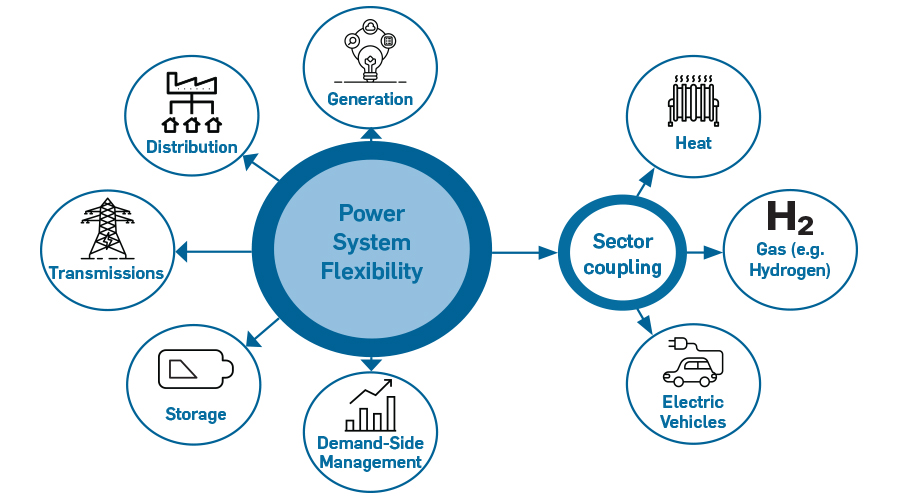
Source - IRENA
International experience suggests that a
diverse mix of flexibility investments is needed
for the successful system integration of wind
and solar PV. Operational Complexity rises as
the share of variable renewables rises. Hydro
Power and Pumped Storage systems are
flexible renewable energy sources in India
for a long period. The need for flexible energy
system was realized during the pandemic
and hence, Central Electricity Regulatory
Commission has come up with the regulation
to operate coal-fired power plants with
minimum generation levels at 55%. This has
proved effective in increasing the capability
of coal-fired plants to accommodate VRE.
Supply-side Flexibility system integration
further includes Grid reinforcement and
planning to effectively accommodate VRE
energy generation and several small-scale
initiatives like rooftop net metering, which
has been effective for households. Network
developmental innovations, technology
up-gradation, Research on Modelling and
Optimization, Grid Digitization are further
required to develop resilient, reliable, and
transparent systems.
Energy Storage Systems will play a crucial
role in increasing the system flexibility to
accommodate the demand requirements. The
energy storage market in India witnessed
a demand of 23 GWh in 2018 with 56%
of the battery demand coming from the
power backup inverter segment. The raw
materials for localized battery manufacturing
are limited and this serves as a setback
in integrating flexible storage systems.
Recycling of batteries and others should be
encouraged to drive domestic manufacturing.
Pumped Hydro Energy Storage has been the
most effective energy storage system over
the years and it has now become necessary
to develop small-scale storage devices with
increased efficiency and decreased cost to
aid the smooth transition. This development
would ultimately lead to the large-scale
adoption of Green Energy technologies at all
levels.
RE Electrification
The race to Net Zero 2050 requires the deployment of various renewable
energy technologies and other BoS systems on a massive scale. The changing
scenarios like the decreased cost of RE systems, the flexibility of energy
systems, policy initiatives, and global pressure will lead to a historic shift. The
research to diversify the energy sources will prove effective in exploring new
feasible technologies. The augmentation of flexible systems like making the
Grid systems smarter and resilient from threats will aid in the Re-Electrification
pathways by increasing the share of renewable channels.
Decarbonization of Energy and Industry
Climate change mitigation is one of the key areas for the countries to contribute
to promote sustainable development and ensure the socio-economic well-being
of the general population. GHG emissions are major drivers of global warming
leading to various human ecological consequences. India is one of the largest
energy producers and consumers in the world. Energy Sector accounts for 73%
of GHG emissions which is the result of cumulative energy usage in Iron and
Steel Industries, Petro Chemical Industries, Transport sectors, Residential
and Commercial buildings. This gives rise to the need to shift to low carbon
energy technologies and energy-efficient techniques. Further, the deployment
of renewable energy and subsequent decrease in usage of conventional energy
sources like Coal, Oil, etc will also help in reducing the catastrophic events.
Key clean technologies ramp up by 2030 in the net zero pathway
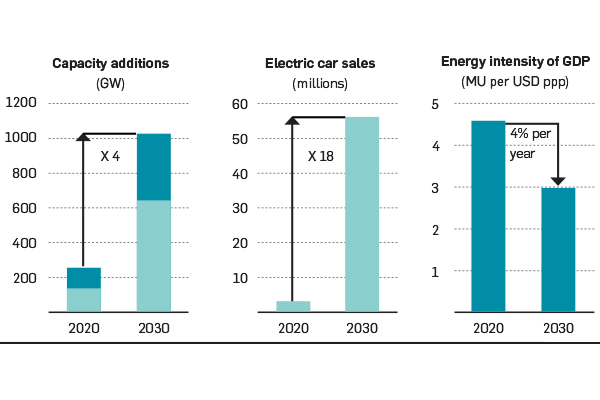
Note: MU = megajoules; GDP = gross domestic Product in purchasing Power parity
Further to Decarbonizing the electricity
systems, innovations in storage technologies,
electrolyzers, carbon capture systems can aid
the transformative journey. Green Hydrogen
and Molecules are expected to evolve as an
alternative fuel replacing fossils, especially
in energy-intensive industrial sectors. The
exponential growth in the electrolysis project
pipeline in 2020 and the unprecedented
interest around hydrogen as a decarbonization
tool have been driven by a combination of
falling costs and policy support. The declining
cost of low-carbon hydrogen is anticipated
to continue to fall by a further 40% through
2025 due to the falling cost of renewable
electricity. But, the obstacles for tapping this
fuel like electrolysers, transportation of green
hydrogen, and the requirement of renewable
energy for providing the power source are to
be subjugated. Carbon capture, utilisation, and
storage systems are important technological
systems to mitigate global warming by
capturing and storing the emission. Cost
of the technology is a major bottleneck for
effectively utilizing, innovating and providing
policy assistance to speed up the adoption.
Circular Economy practices can also augment
climate change mitigation by increasing
the life cycle of materials and also thereby
reducing the corresponding GHG emissions
associated with the manufacturing process,
transportation of raw materials. Material
Efficiency plays a significant role in promoting
circular economic business models. Take-Make-Waste linear models when replaced
with circular models can have impactful
results in decarbonizing the systems. Life
cycle emissions of solar and wind systems
will also be drastically reduced since a major
portion of emissions is from the Fabrication
of systems. The barriers like Government
regulations, Technological feasibility,
Consumer behaviour, and expectations
should be handled efficaciously to establish
synergies between decarbonization and
circular business models.
